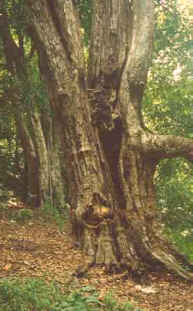
Plant Description
Caution & Interaction

Latin (botanical) name:
Eugenia caryophyllata
Common names: Eugenia Aromatica
Plant Description: Clove trees are generally found in Molucca and Pemba, but can also be seen in the East and West Indies, Sumatra, Jamaica, Mauritius and Brazil. A relatively small evergreen tree, they grow to be about 15-30 feet tall. It has bright green opposite, ovate leaves that are quite large on short foot-stalks. Light green buds appear on the trees early on in the rainy season. Its flowers, when allowed to develop, are peach colored or red and white, and bell-shaped, and grow in terminal clusters. The fruit is a one or two-seeded berry.
Medicinal Properties &Uses: Clove contains volatile oil, gallotannic acid, gum, resin, fiber and two crystalline principles, Caryophyllin and Eugenin. The oil used as a local irritant stimulates peristalsis. Taken in powder form or infusion, it is an excellent treatment for nausea, flatulence, indigestion and dyspepsia. Clove is known to be a germicide, an antiseptic, and an expectorant used to treat bronchial ailments. As a powerful local antiseptic and mild anaesthetic, it may be used topically to help alleviate the pain of toothaches.
Dosage: 5-15 drops in water or juice, 2-3 times daily or as needed. Shake well before using.
Cautions & Interactions: Keep out of reach of children.
Efficacy Studies & Other Clinical Data: Helpful Links:
Disclaimer (U.S. Only): These statements have not been evaluated by the FDA. These products are not intended to diagnose, cure, treat, or prevent any disease.
Common names: Eugenia Aromatica
Plant Description: Clove trees are generally found in Molucca and Pemba, but can also be seen in the East and West Indies, Sumatra, Jamaica, Mauritius and Brazil. A relatively small evergreen tree, they grow to be about 15-30 feet tall. It has bright green opposite, ovate leaves that are quite large on short foot-stalks. Light green buds appear on the trees early on in the rainy season. Its flowers, when allowed to develop, are peach colored or red and white, and bell-shaped, and grow in terminal clusters. The fruit is a one or two-seeded berry.
Medicinal Properties &Uses: Clove contains volatile oil, gallotannic acid, gum, resin, fiber and two crystalline principles, Caryophyllin and Eugenin. The oil used as a local irritant stimulates peristalsis. Taken in powder form or infusion, it is an excellent treatment for nausea, flatulence, indigestion and dyspepsia. Clove is known to be a germicide, an antiseptic, and an expectorant used to treat bronchial ailments. As a powerful local antiseptic and mild anaesthetic, it may be used topically to help alleviate the pain of toothaches.
Dosage: 5-15 drops in water or juice, 2-3 times daily or as needed. Shake well before using.
Cautions & Interactions: Keep out of reach of children.
Efficacy Studies & Other Clinical Data: Helpful Links:
Disclaimer (U.S. Only): These statements have not been evaluated by the FDA. These products are not intended to diagnose, cure, treat, or prevent any disease.